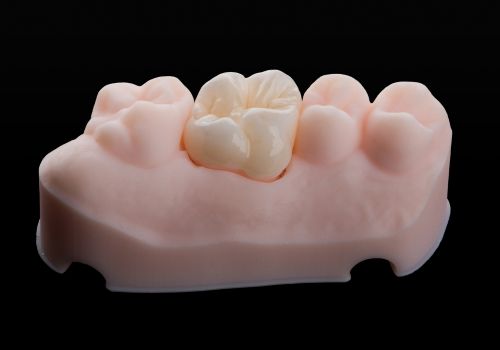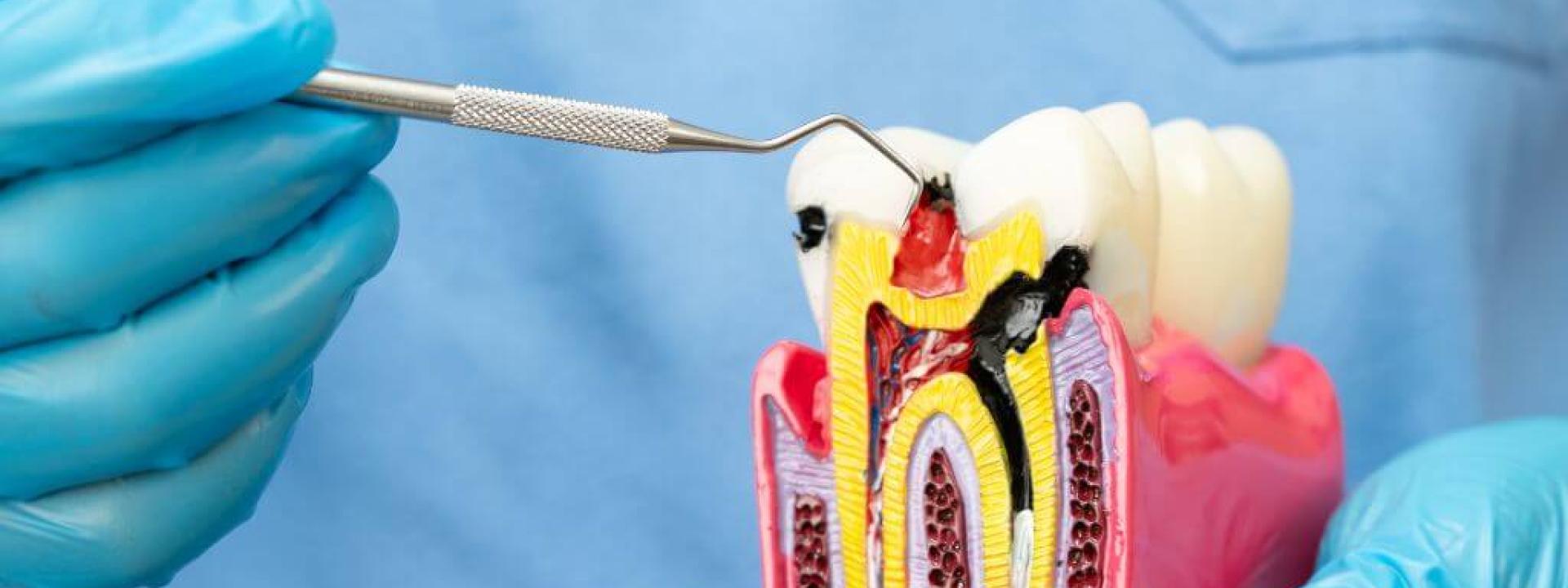The mere mention of needing a root canal triggers anxiety and confusion among many dental patients. People often harbor misconceptions about this procedure, which can lead to unnecessary worry and delayed treatment. As dental professionals, we’re here to explain root canal treatment to help you get the care you need without worry.
What Exactly Is a Root Canal?
Root canal treatments remove infected or severely damaged pulp tissue from inside your tooth. Containing nerves and blood vessels, the pulp sometimes becomes infected due to severe decay, repeated dental procedures, or trauma. During the procedure, a dentist removes the infected tissue and cleans and disinfects the root canals. Then, they fill and seal the space to prevent further infection.
Do Root Canals Hurt?
Despite common misconceptions, a root canal should not cause significant pain. Dentists thoroughly numb the treatment area, making the procedure comfortable for most patients. You may feel pressure during the treatment, but sharp pain indicates inadequate numbing. If you experience pain, let your dentist know so they can administer additional anesthesia as needed.
The infected tissue that necessitates a root canal often causes severe pain. However, most patients experience immediate relief once the infected material is removed. Post-treatment discomfort typically ranges from mild to moderate and responds well to over-the-counter pain medications.
Some patients experience increased sensitivity for a few days following treatment. This normal response occurs as surrounding tissues heal from the infection and procedure. Your dentist may recommend specific pain management strategies based on your unique needs.
How Long Does a Root Canal Procedure Take?
The average root canal takes about 30 to 60 minutes, though the exact time can vary.
Several factors influence treatment duration, including:
- Number of roots in the affected tooth
- Severity of infection
- Complexity of root canal anatomy
- Need for additional procedures
Your dentist will provide a timeline estimate during your consultation.
Why Do I Need a Crown After a Root Canal?

Root canals remove a significant portion of a tooth’s inner structure. This weakens the remaining tooth structure, making it prone to fracturing under normal chewing forces.
A dental crown provides comprehensive protection by covering the tooth visible above the gum line. It distributes chewing forces evenly and prevents cracks that could compromise the root canal or require tooth extraction.
Back teeth, in particular, benefit from crown placement due to the substantial forces they endure during chewing. Dentists sometimes recommend fillings instead of crowns for front teeth, depending on the amount of remaining healthy tooth structure.
Delaying crown placement after a root canal increases the risk of tooth fracture. Many insurance plans recognize this and provide coverage for crowns following root canals.
How Long Does Recovery Take After a Root Canal?
Recovering from a root canal takes a few days to a week, and most patients resume normal activities within 24 to 48 hours. The exact healing timeline depends on several factors, including the extent of infection before treatment and your body’s healing response.
You may experience mild to moderate discomfort on days one and two. Taking over-the-counter pain relievers is usually enough to manage this discomfort. Your dentist may prescribe more potent pain medication for more complex cases or if you experience complications.
Complete healing of the surrounding tissues takes several weeks, though you shouldn’t experience symptoms during this period. Your dental team will closely monitor your healing and address any issues that may arise during your recovery.
What Are the Signs That a Root Canal Failed?
While root canal success rates exceed 85% when proper techniques and follow-up care are maintained, failure is possible.
These symptoms could indicate that your root canal has failed:
- Persistent or returning pain
- Swelling around the treated tooth or in facial tissues
- Sensitivity to temperature changes
- Changes in tooth color
If you experience any of these issues, contact your dentist immediately.
Can I Eat Normally Following a Root Canal?
You’ll need to temporarily modify your eating habits following root canal treatment. Your dentist will provide specific guidelines. In general, you should avoid chewing on the treated side for the first few days to prevent discomfort and protect the temporary filling or crown.

Choose soft foods that require minimal chewing during the initial recovery period. Soups, smoothies, pasta, and cooked vegetables provide nutrition without stressing the treated tooth.
Avoid hard, sticky, and crunchy foods that could dislodge temporary restorations or cause discomfort. These include nuts, hard candies, ice, and chewy foods like caramel or gum.
Once your dentist has placed the permanent crown, you can return to your regular diet. The restored tooth should function just like your natural teeth, letting you enjoy all of your favorite foods without restriction.
Are There Alternatives to Root Canal Treatment?
Having an infected tooth extracted is the main alternative to a root canal. However, extraction creates additional challenges and expenses that root canal treatment avoids.
Some patients seek antibiotics for infected teeth, but medications cannot fully eliminate infection within root canals where the blood supply is compromised. Antibiotics may provide temporary relief but rarely resolve the underlying problem.
How Much Does Root Canal Treatment Cost?
A root canal’s cost varies based on the location of the tooth and the complexity of the case, with pricing typically ranging from $600 to $1,200. Your geographic location and individual dental practice fees also influence pricing.
Dental insurance plans often cover root canals at 50-80% of the procedure cost. This coverage reflects the treatment’s role in preserving natural teeth and preventing more expensive complications.
Keep in mind that the total cost includes both root canal therapy and crown placement. While it may seem expensive, the price is significantly lower than that of a tooth extraction followed by implant placement or bridge construction.
What Should I Do to Avoid Needing a Root Canal?
Practicing good oral hygiene is the best way to avoid a root canal. Daily brushing with fluoride toothpaste and flossing remove bacteria that cause tooth decay. Professional cleanings every six months eliminate plaque buildup. Plus, regular checkups enable your dentist to identify problems early, often allowing for treatment before root canal therapy becomes necessary.
Avoid chewing hard objects that can crack teeth and expose the pulp to bacteria. During athletic activities, use mouthguards to prevent dental trauma.
Conclusion
Root canals are an effective solution for preserving teeth that are infected or damaged. With a better understanding of this treatment, you can approach a root canal with realistic expectations and confidence rather than fear. If you have any additional questions or concerns, don’t hesitate to contact your dental team.
If you have questions and you'd like to reach out to us, you can call us directly at (636) 434-1244, or you can email us at [email protected].

